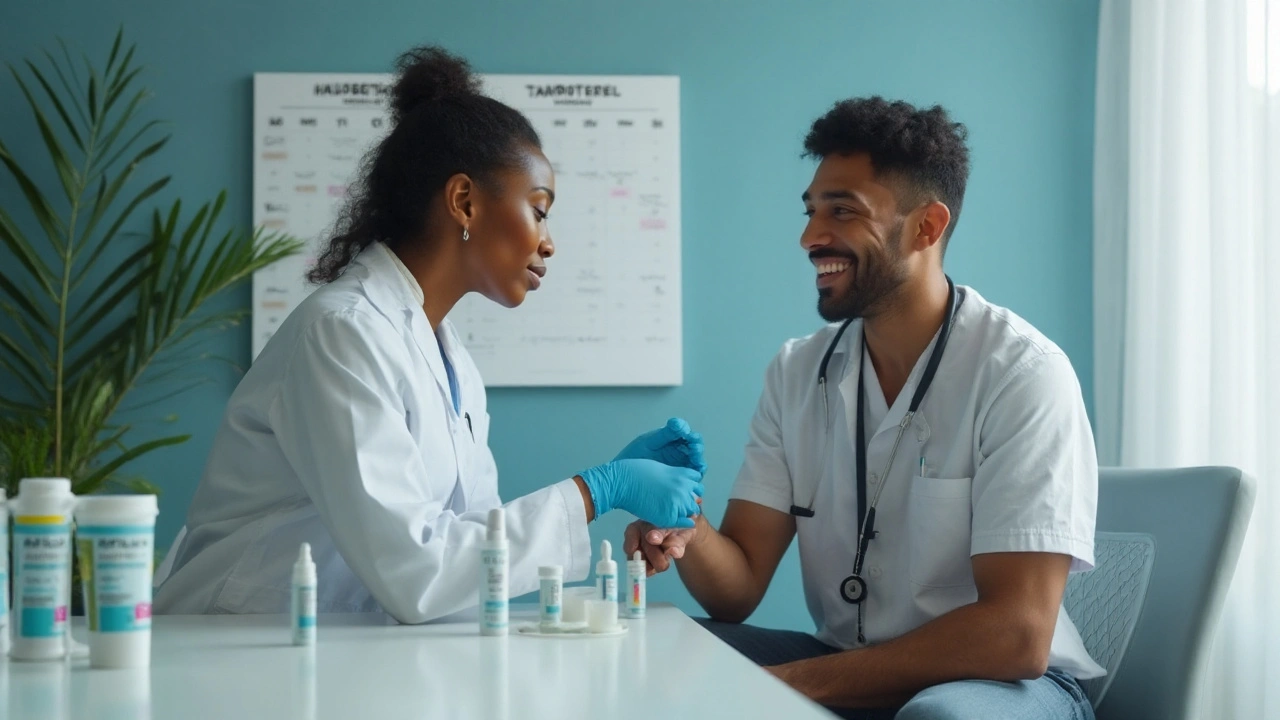Psoriasis: What It Is, How It Shows Up, and How to Manage It
If you’ve ever seen red, scaly patches on skin and wondered what they mean, you’re probably looking at psoriasis. It’s a common, long‑lasting skin condition that shows up as itchy, thickened plaques. About 2‑3% of people worldwide have it, and it can appear at any age. The good news? You can control the signs and keep flare‑ups from stealing your confidence.
Understanding Psoriasis
Psoriasis isn’t just a rash. It’s an overactive immune response that speeds up skin cell growth. Normally, skin cells replace themselves every 28‑30 days. With psoriasis, that cycle shrinks to a few days, so cells pile up on the surface, forming the classic silvery‑white scales.
Typical spots include elbows, knees, scalp, lower back, and the navel area, but they can pop up anywhere. You might notice one of these signs:
- Red patches with a raised, silver‑gray buildup.
- Itching or burning sensations.
- Dry, cracked skin that sometimes bleeds.
- Joint pain (psoriatic arthritis) in about 30% of cases.
Triggers vary from person to person. Common culprits are stress, cold weather, infections, injuries to the skin, and certain medications like beta‑blockers or lithium. Watching what sets off your flare‑ups is the first step to reigning them in.
Managing Flare‑Ups
There’s no one‑size‑fits‑all cure, but a mix of lifestyle tweaks and treatments can keep the disease in check.
Topical treatments are usually the first line. Over‑the‑counter creams with salicylic acid or coal tar can soften plaques. Prescription options include corticosteroids, vitamin D analogues (like calcipotriene), and retinoids. Apply them to clean, dry skin and follow your doctor’s instructions to avoid irritation.
Phototherapy uses controlled UV light to slow skin cell growth. Many clinics offer narrow‑band UVB sessions that require a few visits each week. It’s safe when supervised, and many people see clear improvement after a few weeks.
Systemic meds such as methotrexate, cyclosporine, or newer biologics (like adalimumab) target the immune system more directly. These are reserved for moderate to severe cases because they affect the whole body. Talk with a dermatologist about the risks and benefits before starting.
Beyond meds, daily habits matter:
- Moisturize often: Thick creams or ointments lock in moisture and reduce cracking.
- Manage stress: Mindfulness, yoga, or simple breathing exercises can lower flare frequency.
- Watch your diet: Some people feel better cutting back on red meat, dairy, and processed foods. Omega‑3‑rich fish and leafy greens might help, though evidence is mixed.
- Avoid skin injury: Scratching or harsh soaps can trigger the Koebner phenomenon—new plaques where the skin was damaged.
If you notice joint pain, swelling, or stiffness that lasts longer than a few weeks, ask your doctor about psoriatic arthritis. Early treatment can prevent joint damage.
Staying on top of psoriasis is a marathon, not a sprint. Keep track of your triggers, follow treatment plans, and don’t hesitate to adjust them with professional help. With the right mix of care, you can keep the skin looking smoother and feel more comfortable in everyday life.
Halobetasol Combination Therapy: Safe Use for Psoriasis, Eczema, and Thick Plaques

Clear guidance on using halobetasol with partners like tazarotene or calcipotriene: when it helps, how to dose, taper, avoid side effects, and what to use instead.
